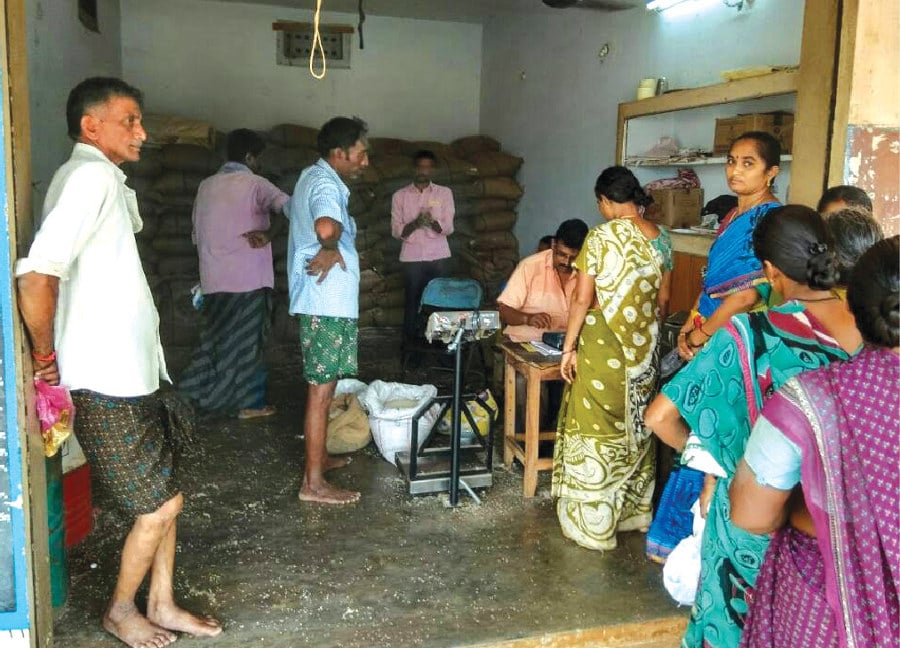Totally based on biometric authentication, the electronic public distribution system project initiated and implemented by the state government of Andhra Pradesh has been developed on PostgreSQL, the open source database.
It was in 2014 that the Andhra Pradesh government decided to go digital and opted for an electronic solution for its PDS (public distribution system). While the initial model was tested in a few small regions, the final release can handle as many as four million transactions per day during peak time across all the 13 districts in the state—all this powered by PostgreSQL, the open source database.
The Andhra Pradesh (AP) government gave the task of transforming its public distribution system to a team at the National Informatics Centre (NIC). Led by civil supplies commissioner and state informatics officer (SIO) of Andhra Pradesh, K. Rajasekhar, the NIC team preferred US-based EnterpriseDB to build a progressive ePDS (electronic public distribution system) model, in order to improve the transparency, efficiency and effectiveness of the system.
The arrival of the ePDS in the region has also set the stage for next-generation solutions, including eSCM (electronic supply chain management) and ePOS (electronic point of sale). All these developments have led to hyper-scalability, high-availability, reliability and high-concurrency to the entire process of delivering civil supplies in the state, along with low latency.
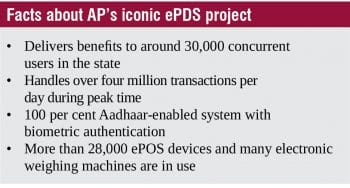 ePDS: a mission critical application
ePDS: a mission critical application
The Postgres database, which currently holds nearly 38 million records, was deployed right at the beginning of the project. This open source database helped to enable Aadhaar-based biometric authentication in real-time, and offer cashless as well as cardless transactions.
“The application that we have developed with the support of NIC and EnterpriseDB for distributing rations in the region is very mission critical and citizen-centric,” Rajasekhar told Open Source For You.
The latest Postgres release (version 9.6), which has been powering the distribution system, can be scaled to more than 1.5 million transactions per second (TPS). However, the team is working on parallel data processing features to achieve a higher TPS.
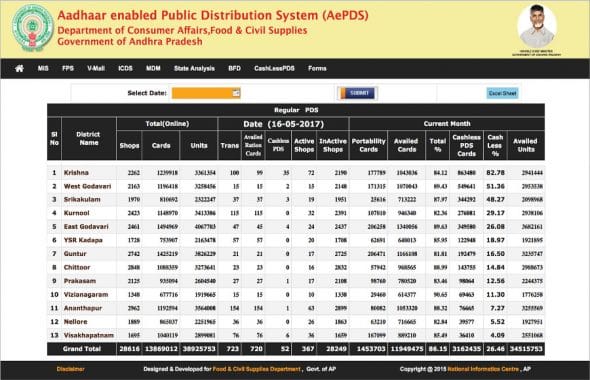
The early challenges
Like with any other large scale project, the development of a huge ePDS also faced some challenges initially. As Ashish Nauriyal, a lead solutions consultant at EnterpriseDB, explained in a conversation with Open Source For You, the major challenges were designing, deploying and maintaining Postgres for a mission critical, statewide ePDS. “Some of the specific challenges faced were appropriate Postgres versions and project-relevant features, database and server-level tuning, expert guidance, implementation of best practices, tools required to achieve desired database-level tasks such as diagnosis of performance issues, monitoring, high-availability, maintenance operations, and ongoing database server and application level changes,” recalls Nauriyal.
The engineers leveraged their extensive experience in the database management space to overcome these challenges. The engineering team provided support for disaster recovery, security controls, performance tuning, and backups and upgrades in addition to designing and implementing systems. Also, the NIC team was allowed to change the management for the database with minimal or even no production database service disruption.
For the team at NIC, the major obstacle was the execution of tasks like biometric authentication, the Aadhaar-enabled payment interface and hyper-scaling. “With the appropriate architecture and optimisation through the efforts of EnterpriseDB, the solution worked out flawlessly,” says Rajasekhar.
However, as the state government was committed to improving transparency and efficiency, no major administrative challenges were faced in opting for the advanced ePDS model.
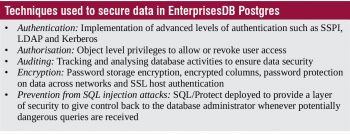 Linux as a software stack
Linux as a software stack
The NIC engineers used Linux as the software stack for the Postgres deployment. This mix is considered to be the real icing on the cake. “Postgres and Linux originate from a like-minded community. This community essence makes Linux an optimal platform for running Postgres,” says Nauriyal.
The presence of Linux enables experts like Nauriyal to control the database with ease. It also provides the flexibility to choose from multiple file systems to enable satisfactory results. “Control and visibility of a platform, along with the flexibility to choose from multiple file systems, help database administrators to manage a Postgres database that is performing well,” says Ramakrishna Malempati, senior database consultant, EnterpriseDB.
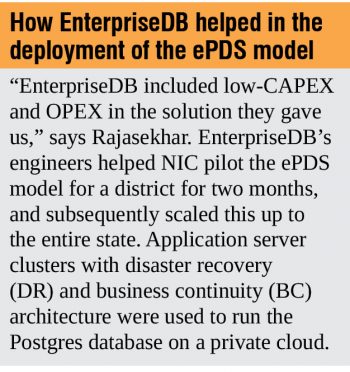
Other open source deployments
Apart from PostgreSQL, the NIC team also deployed Cassandra and MongoDB as the database solutions to make its ePDS, eSCM and ePOS successful in the state. The use of all these open source solutions has reduced the CAPEX and OPEX of this project to zero.
The success of AP’s ePDS model has led to other states planning for its replication, with Rajasthan and Maharashtra being the first two states to do so.
































































